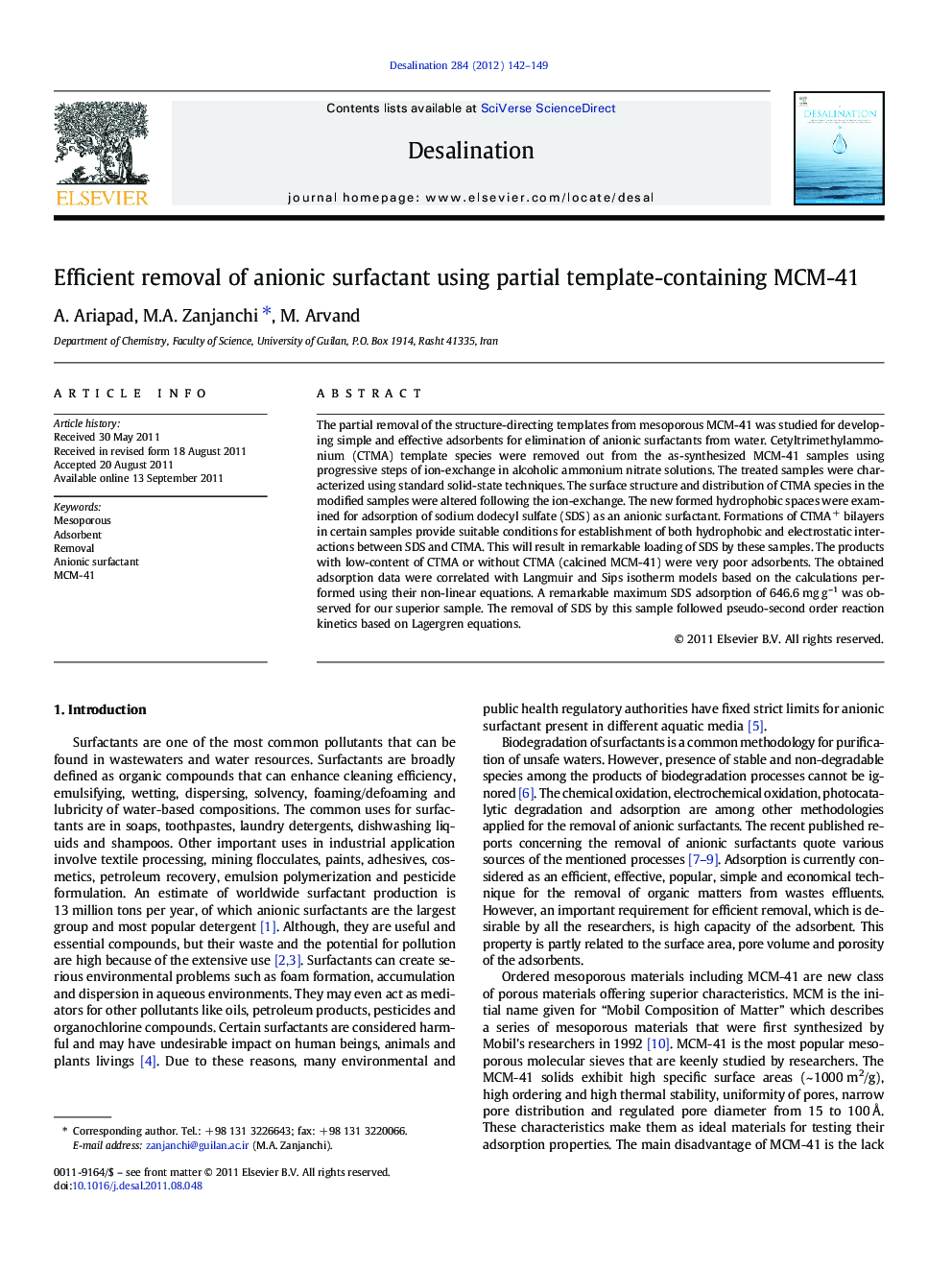| Article ID | Journal | Published Year | Pages | File Type |
|---|---|---|---|---|
| 624671 | Desalination | 2012 | 8 Pages |
The partial removal of the structure-directing templates from mesoporous MCM-41 was studied for developing simple and effective adsorbents for elimination of anionic surfactants from water. Cetyltrimethylammonium (CTMA) template species were removed out from the as-synthesized MCM-41 samples using progressive steps of ion-exchange in alcoholic ammonium nitrate solutions. The treated samples were characterized using standard solid-state techniques. The surface structure and distribution of CTMA species in the modified samples were altered following the ion-exchange. The new formed hydrophobic spaces were examined for adsorption of sodium dodecyl sulfate (SDS) as an anionic surfactant. Formations of CTMA+ bilayers in certain samples provide suitable conditions for establishment of both hydrophobic and electrostatic interactions between SDS and CTMA. This will result in remarkable loading of SDS by these samples. The products with low-content of CTMA or without CTMA (calcined MCM-41) were very poor adsorbents. The obtained adsorption data were correlated with Langmuir and Sips isotherm models based on the calculations performed using their non-linear equations. A remarkable maximum SDS adsorption of 646.6 mg g–1 was observed for our superior sample. The removal of SDS by this sample followed pseudo-second order reaction kinetics based on Lagergren equations.
► Partial removal of constituent template of MCM-41 creates effective adsorbent of SDS. ► Both hydrophobic and electrostatic interactions are involved in useful adsorption. ► Amount of template left in the adsorbent has great influence on loading of SDS. ► The Sips and Langmuir isotherms describe adsorption of SDS onto the modified MCM-41.
